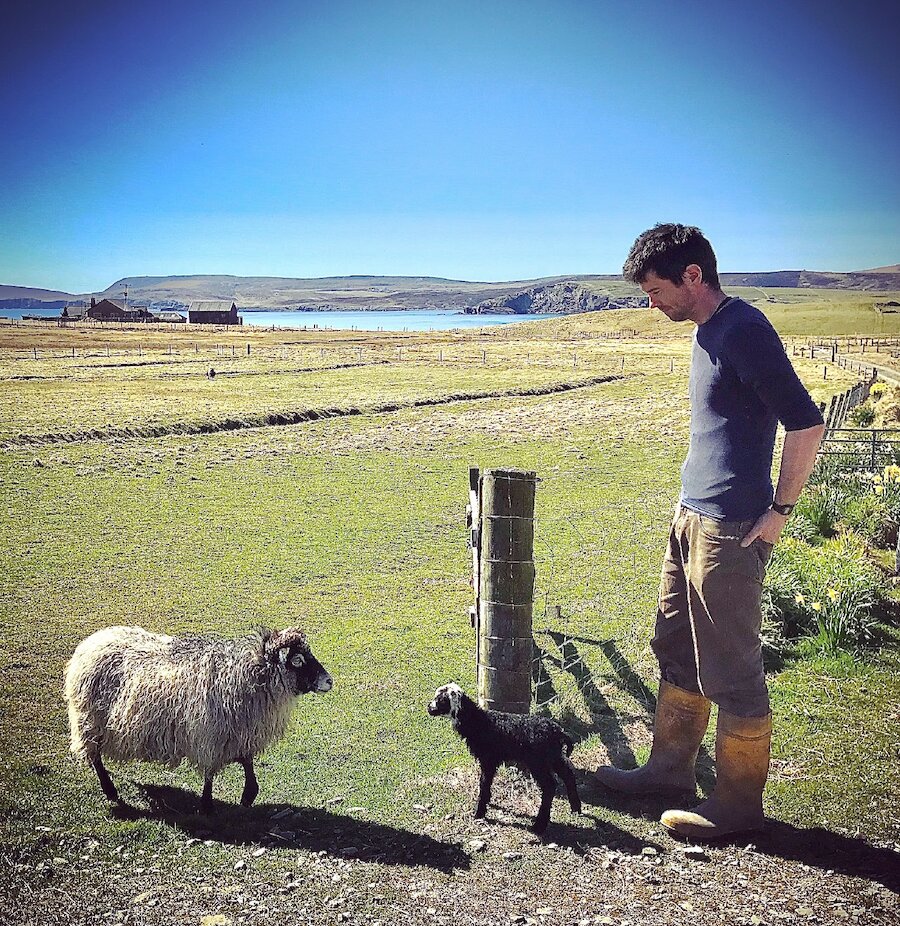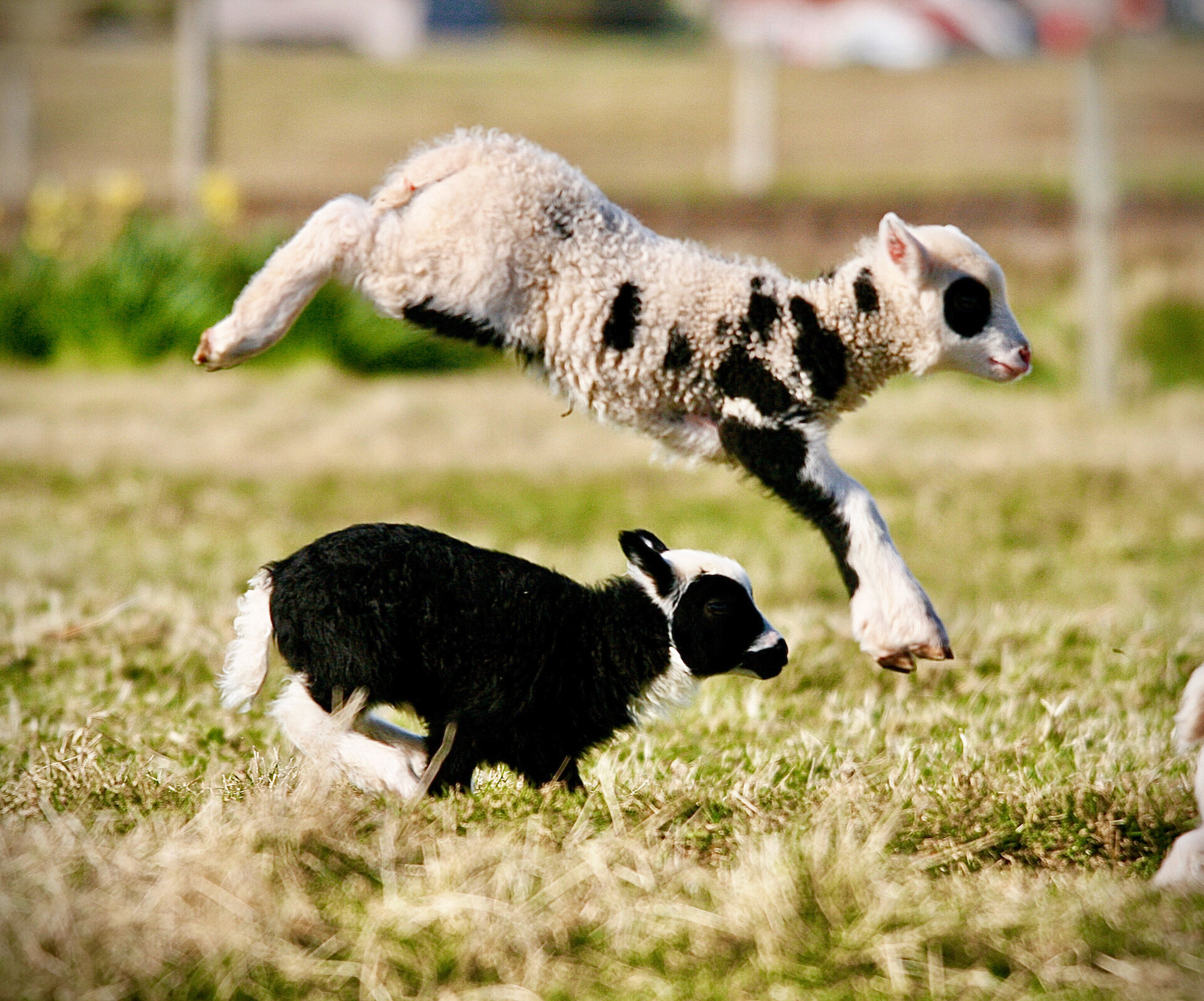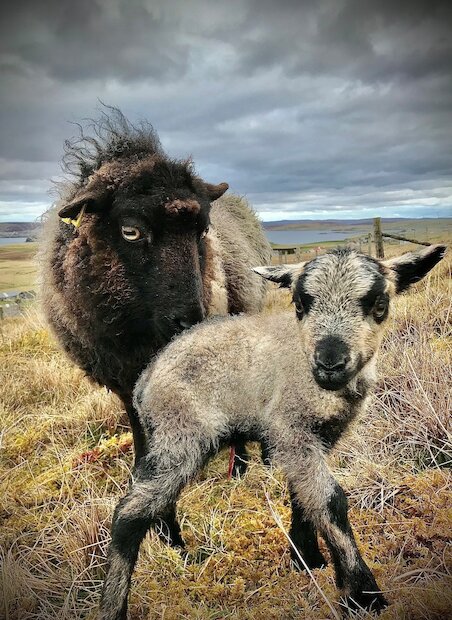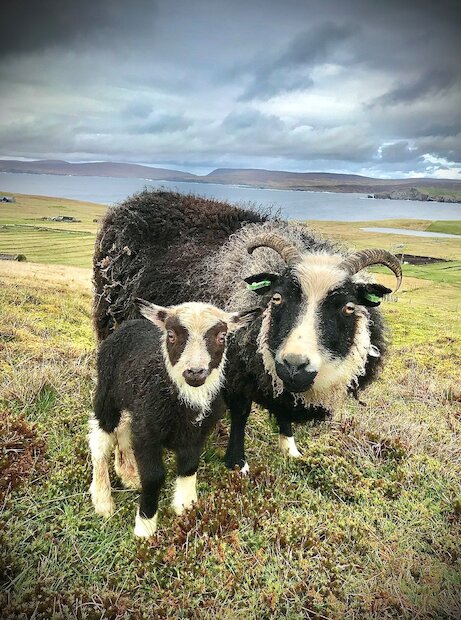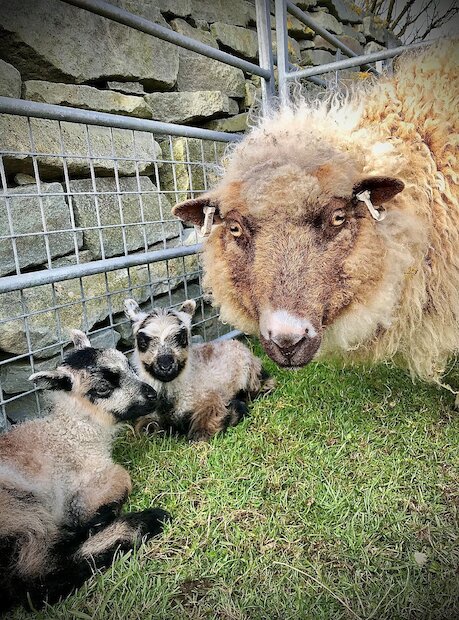From the native, hardy Shetland sheep which can reflect an array of traditional colourings and markings to the more commercial breeds such as Suffolks, Texels and Cheviots, lambs will arrive for the next month at all hours of the day and it is the responsibility, honour and privilege of the crofting community to look after and tend to their flocks.
Having introduced rams approximately five months previously, in late November, careful thought and consideration must now be given to the location of where sheep will give birth. A few weeks prior, hills are gathered and expectant ewes taken back to their home holdings where a watchful eye can be kept. A veritable shopping list is also compiled, consisting of everything from supplementary powdered colostrum to bales of straw for bedding and from bottles of iodine for antiseptic usage to spray paint so that ewes and lambs can be numbered and matched accordingly. Heat lamps, waterproof jackets (for both lambs and humans!), bottles, medicine, syringes, hurdles... there are many extras.
At Garths Croft Bressay, extra rations of hay and feed nuts are issued in the last six weeks of gestation when the lamb effectively doubles in size and thus draws on more reserves from the ewe. The sheep are also moved to fields with good visibility (sometimes with binoculars) from the house. And thus the waiting game begins... A significant number of larger breeders of sheep will have placed a raddle on their ram with coloured paint to accurately know when lambs are to be expected, ascertained by the faded colouring on the rear of the ewe.
Additionally, there are several excellent Shetland contractors who offer scanning services through the early months of the year, permitting knowledge of whether the ewe is carrying a single lamb, twins or occasionally triplets. This is very useful information for the livestock holder as ewes with triplets in the latter stages of pregnancy will have significantly different nutritional requirements compared to those carrying a single lamb and feed can be amended appropriately.
